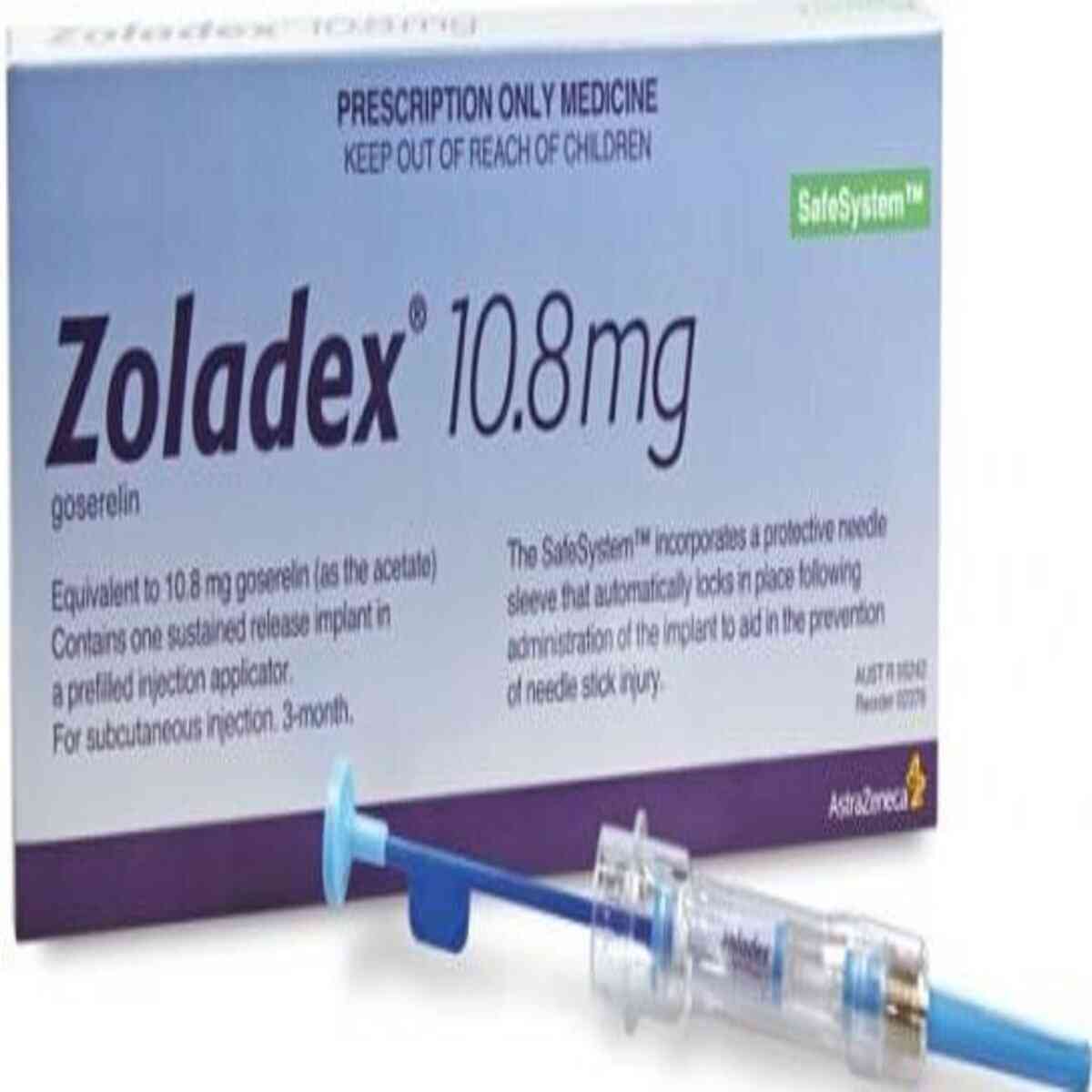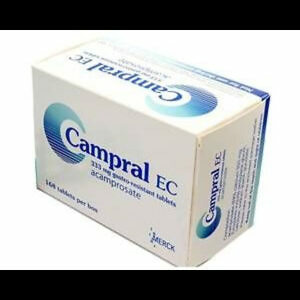Description
Zoladex Injection 10.8mg – Goserelin Injection 10.8mg, 1 Pack
Introducing Zoladex Injection 10.8mg – Goserelin Injection 10.8mg, also known as Zoladex LA, a revolutionary product that can help in the treatment of prostate cancer. This implant is designed to reduce the production of testosterone, which is a hormone that can contribute to the growth of prostate cancer cells.
Zoladex Injection 10.8mg (Zoladex LA) is a long-acting form of the medication and is administered every 12 weeks. It contains a powerful medicine called goserelin, which is part of a group of drugs known as LHRH analogues. These drugs are used to treat a variety of conditions, including prostate cancer, endometriosis, and breast cancer.
The implant is easy to use and is inserted under the skin by a healthcare professional. Once inserted, it works continuously to suppress testosterone production in the body. This can help to slow the growth and spread of cancer cells, and improve overall quality of life for those living with prostate cancer.
If you or a loved one is struggling with prostate cancer, Zoladex Injection – Goserelin Implant may be able to help. Talk to your healthcare provider today to learn more about this innovative treatment option.
What is Prostate Cancer?
Prostate cancer is the most frequently diagnosed cancer among men in the UK. The disease typically progresses slowly, and therefore may remain asymptomatic for a considerable period. Symptoms associated with prostate cancer typically manifest once the prostate has enlarged enough to impact the urethra, the tube that transports urine from the bladder to the penis. Indications of prostate cancer may include an increased frequency of urination, straining while urinating, and a sense that the bladder has not fully emptied. While these symptoms should not be disregarded, they are not necessarily indicative of prostate cancer, as they can also be caused by other conditions, such as prostate enlargement.
When this happens, you may notice things like:
- an increased need to pee
- straining while you pee
- a feeling that your bladder has not fully emptied
These symptoms should not be ignored, but they do not mean you have prostate cancer.
It’s more likely they’re caused by something else, such as prostate enlargement.
WHAT IS THE PROSTATE?
The prostate is a small gland in the pelvis, found only in men.
About the size of a satsuma, it’s located between the penis and the bladder, and surrounds the urethra.
The main function of the prostate is to produce a thick white fluid that creates semen when mixed with the sperm produced by the testicles.
The causes of prostate cancer are largely unknown. But certain things can increase your risk of developing the condition.
The chances of developing prostate cancer increase as you get older. Most cases develop in men aged 50 or older.
For reasons not yet understood, prostate cancer is more common in men of African-Caribbean or African descent, and less common in Asian men.
Men whose father or brother were affected by prostate cancer are at slightly increased risk themselves.
Recent research also suggests that obesity increases the risk of prostate cancer.
TESTS FOR PROSTATE CANCER
There’s no single test for prostate cancer.
All the tests used to help diagnose the condition have benefits and risks that your doctor should discuss with you.
The most commonly used tests for prostate cancer are:
- blood tests
- a physical examination of your prostate (known as a digital rectal examination, or DRE)
- an MRI scan
- a biopsy
PSA TESTING
The blood test, called a prostate-specific antigen (PSA) test, measures the level of PSA and may help detect early prostate cancer.
Men over 50 can ask for a PSA test from a GP.
Men are not routinely offered PSA tests to screen for prostate cancer, as results can be unreliable.
This is because the PSA blood test is not specific to prostate cancer.
Your PSA level can also be raised by other, non-cancerous conditions.
Raised PSA levels also cannot tell a doctor whether a man has life-threatening prostate cancer or not.
If you have a raised PSA level, you may be offered an MRI scan of the prostate to help doctors decide if you need further tests and treatment.
For many men with prostate cancer, treatment is not immediately necessary.
If the cancer is at an early stage and not causing symptoms, your doctor may suggest either “watchful waiting” or “active surveillance”.
The best option depends on your age and overall health. Both options involve carefully monitoring your condition.
Some cases of prostate cancer can be cured if treated in the early stages.
Treatments include:
- surgically removing the prostate
- radiotherapy – either on its own or alongside hormone therapy
Some cases are only diagnosed at a later stage, when the cancer has spread.
If the cancer spreads to other parts of the body and cannot be cured, treatment is focused on prolonging life and relieving symptoms.
All treatment options carry the risk of significant side effects, including erectile dysfunction and urinary symptoms, such as needing to use the toilet more urgently or more often.
For this reason, some men choose to delay treatment until there’s a risk the cancer might spread.
Newer treatments, such as high-intensity focused ultrasound (HIFU) and cryotherapy, aim to reduce these side effects.
Some hospitals may offer them as an alternative to surgery, radiotherapy or hormone therapy.
But the long-term effectiveness of these treatments is not known yet.
LIVING WITH PROSTATE CANCER
Prostate cancer is typically characterized by a slow progression, allowing individuals to live for several decades without the manifestation of symptoms or the need for treatment. Despite this, the diagnosis of prostate cancer can have a significant impact on one’s life, with potential side effects from treatment and an understandable risk of experiencing anxiety or depression. Discussing the condition with trusted family members, friends, family doctors, and support groups for men with prostate cancer can prove to be beneficial. Additionally, financial assistance is available to individuals experiencing a reduced ability to work due to prostate cancer.
Find out more about living with prostate cancer
Zoladex Injection 10.8mg Reviews
After using Zoladex Injection 10.8mg, it’s helpful to let others know about your experience. Reviews of an item help other users know that medicines received have helped the condition it is claimed for, how well the treatment worked or any issues to be aware of. We invite our users to leave a review of both their treatment and of the service provided. Click on the reviews tab to see if there has been feedback on this item.
What is the price of Zoladex Injection 10.8mg?
The price of Zoladex Injection 10.8mg is £280.00
Where can you buy Zoladex Injection 10.8mg?
You can buy Zoladex Injection 10.8mg at Dock Pharmacy Essex UK, UK Online Pharmacy.
Can you buy Zoladex Injection 10.8mg Over the counter?
Zoladex Injection 10.8mg is not available to buy over the counter. You need a prescription to buy Zoladex Injection 10.8mg
 +44 (0) 1375 846 316
+44 (0) 1375 846 316



Reviews
There are no reviews yet